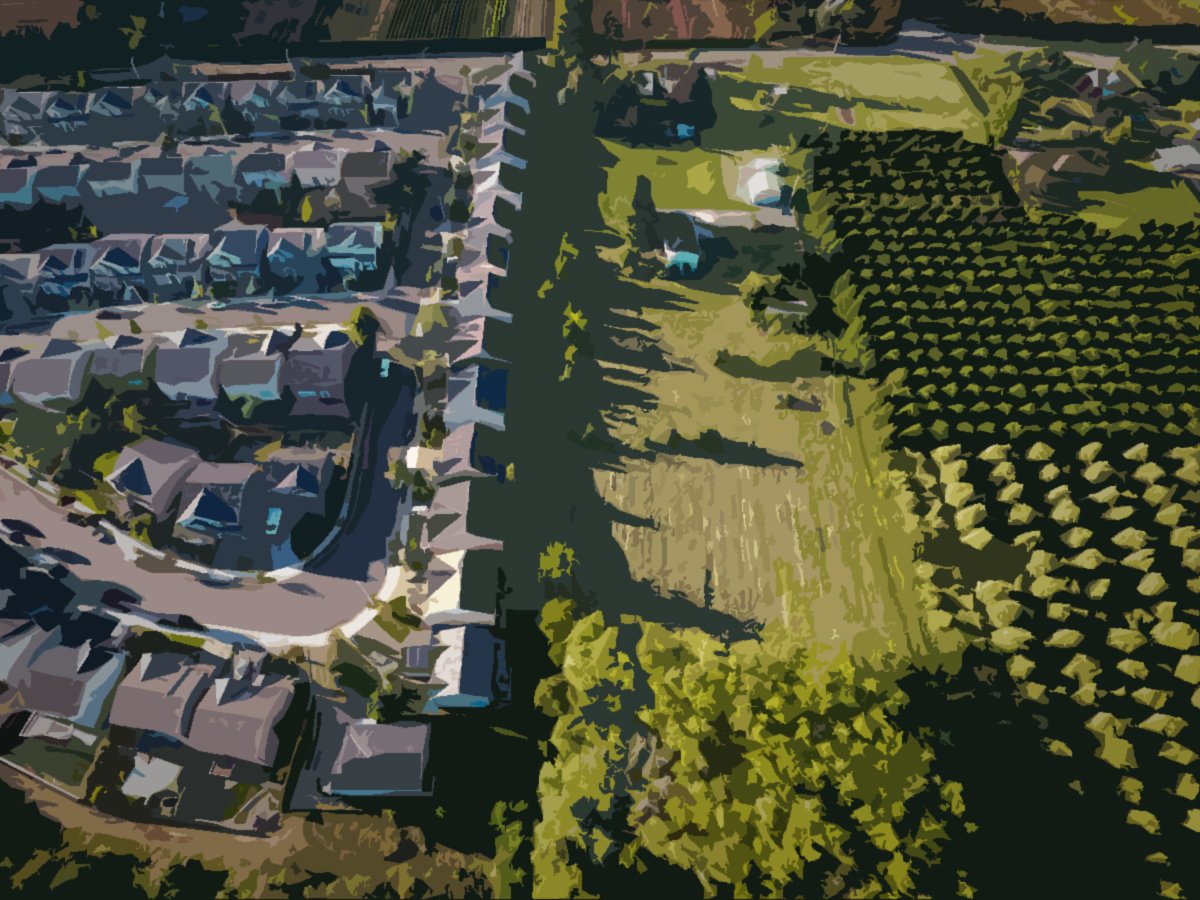What does “Peri-Urban” mean?
In simple terms, “Peri-urban” refers to DYNAMIC TranSition zones where
Urban landscapes, lifestyles, VALUES, and Cultures intermingle with
rural landscapes, lifestyles, VALUES, and Cultures.
some key patterns of of peri-urban regions:
‘Hybrid’ or ‘blurred’ landscapes in-between city and countrysideIntermingled clusters of medium-density suburban developments, low-density exurban residential estates, working lands, and public recreational greenspacesEcological transition zones between human-groomed, ornamental greenspaces and wildlandsIntermingling of avant-garde urban cultures and traditional rural culturesIntermingling of mixed urban economies and primary, land-based economiesComplex community governance issues due to wide gradients of cultural values and complex land-use planning due to competing interests between different stakeholders
Peri-Urban landscapes MAY also be referred to as:
“The Rural-Urban Interface” (RUI), “transition zones”, “fringe lands”, “the rural-urban fringe”, “rurban spaces”, “outskirts”, “hinterlands”, “Gray zone”, “Greenbelt”
“Agriculture practices... around cities which compete for resources (land, water, energy, labour) that could also serve other purposes to satisfy the requirements of the urban population.”
Peri-urban agriculture is the internationally-recognized term for agriculture that occurs within peri-urban regions, and is not a new concept.
characteristics That differentiate Peri-urban Agriculture from urban agriculture and rural agriculture:
Often occurs on farmlands that have historically been preserved out of the necessity of meeting the food and/or fiber demands of an adjacent cityIs often a considerable part of a region’s historical economic makeup and cultural identity, but is not the dominant force within the region’s economy or cultural identityIs often limited to a scale where local/regional wholesale-scale production may still be viable, but commodity-scale production may be limitedIs not (yet) completely encircled by an urban center, and entirely restricted to production for niche markets and/or agricultural education/tourism aloneOften has varying degrees of policy protection safeguarding agriculture against competing urban interestsOften has varying degrees of economic infrastructures/attendant businesses to support larger-scale farm production or production expansionMay occupy larger parcels of land surrounding cities that are otherwise less desireable for residential development such as those adjacent to commercial or industrial areas, working timberlands, motorways, airports, etc.May be located on floodplains or adjacent to preserved wildlands near cities that are otherwise inappropriate for dense residential, commercial, or industrial developmentMay often result in a diverse blend of historic rural agricultural character and modern urban agricultural character in terms of scale, practice, and culture, markets, and market diversityMay often play an educational role in connecting urban populations with the realities of food production, farm livelihoods, stewardship of working lands, and importance of food security
Sattelite Image showing the Peri-Urban agricultural regions of the Portland, OR/Vancouver, WA, USA metro area.
Agriculture in Peri-urban regions often has varying levels of policy protecting historic farmlands and local food security against competing urban interests. The image illustrates how two different counties in differing states (Washington County, OR on the left and Clark County, WA on the Right) have approached land use policy very differently, despite having very comparable population densities, acreages of soils classified as farmland, and crop productivity potential.
Further reading:
“Urban and Peri-Urban Agriculture”, Food and Agriculture Organization of the United Nations
“Farming on the Urban Fringe” by Waldo, A.D., United States Department of Agriculture. Published in: A Place to Live: The Yearbook of Agriculture, 1963.
“Urban Environments: Issues on the Peri-Urban Fringe” by David Simon, Department of Geography, Royal Holloway, University of London published in The Annual Review of Environment and Resources, 2008
“Peri-Urban Food Production and Its Relation to Urban Resilience” by Olsson, G. A. et al. in Sustainability, 2016, 8(12), 1340

